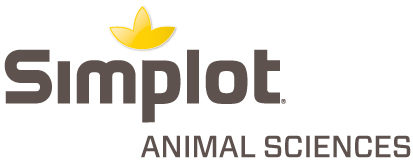Think about the healthiest cows in your herd. What defines them as your healthiest? Is it their older age? Is it the fact they’ve never had mastitis?
Or are they the ones that leave the fresh pen quickly after calving because they don’t have the lingering effects that come with milk fever, metritis, a retained placenta, ketosis or a displaced abomasum?
We’re willing to bet your healthiest cows are the ones you don’t even notice. They’re not on your radar because they simply go about their business, producing high-quality milk with no troubles to you or your team of employees.
We call those unnoticed cows the four-event cows. If you look at a cow card on your herd management software program, you’ll recognize a four-event cow by the lack of items on her list. Throughout her lactation, she experiences only four events: fresh, bred, confirmed pregnant and dry.
When those are the only four events in a cow’s lactation, chances are she’s profitable and healthy.
A healthy cow is the resulting sum of many parts: a solid nutrition program, exceptional transition and fresh cow care, proper milking procedures, comfortable housing – and the right genetics.
While genetics makes up only a small part of the full equation, it’s a real and measurable aspect of what’s in a healthy cow.
Healthy genetics?
In April of 2018, the Council on Dairy Cattle Breeding (CDCB) released a new set of health traits. These traits are based on the database of recorded cases of common costly health problems in dairy cattle. These six new traits measure the resistance animals will have to each respective health and metabolic issue, and are in place to help dairy producers breed a next generation of healthier cows.
They include mastitis, (labeled as MAST), ketosis (KETO), retained placenta (RETP), metritis (METR), displaced abomasum (DA) and milk fever (MFEV).
Taking advantage of the new health traits in your genetic plan offers a great opportunity to create healthier cows. Most of these new traits are also correlated with Productive Life (PL), so if you want the simplest approach to healthier genetics, PL has you covered.
Healthier genetics, plain and simple
For more than two decades, PL has told us how many more, or fewer, months a cow is expected to produce within any given herd. While cows are most often culled because of low production or poor fertility, those reasons typically trace back to more specific health issues in the cow’s life.
Selecting for PL or the new health traits within your genetic plan will help you address any specific health issues in your herd.
We know this from the DairyComp analyses we’ve done on many large progressive herds. In the following example, we analyzed a well-managed, 2,400-cow dairy that does a great job at accurately recording health events. We compared the animals whose sires had the highest average PL against the animals whose sires had the lowest PL values.
No animals are given preferential treatment; they are all cared for with the same high-level management practices. With no other differences separating these animals except their sires’ PL values, we compared how many health events each group had. We looked specifically at cases of mastitis, ketosis, retained placentas, metritis, displaced abomasum and milk fever.
As expected, Table 1 shows the cows in the high-PL group had far fewer cases for each health event.

The economics of healthy genetics
We know these health events have a cost attached to each case, and CDCB has calculated those figures. The dollar value put on each case is modest, not accounting for lost production or decreased fertility. Their calculated values only measure the direct costs associated with each trait.
Let’s take those costs and apply them to our example herd. To do this, we multiplied the dollar value per health event by the difference in number of events between the low-PL group and the high-PL group. Table 2 shows the economic impact of Productive Life within a 2,100-cow dairy.
 This farm saves a total of $21,691 just because of the genetics in its healthy cows.
This farm saves a total of $21,691 just because of the genetics in its healthy cows.
Want healthier cows? Genetics will help
If you include Productive Life or any of the six new health traits within your customized genetic plan, you will create a next generation of unnoticed cows – the type that produce well and go about their business with few health troubles.
Environment, cow comfort and management practices all play a leading role in the health of your herd. Now you also see how genetics can positively impact both cow health and the economic health of your dairy. ![]()

-
Chrissy Meyer
- Marketing Editor
- Alta Genetics
- Email Chrissy Meyer











